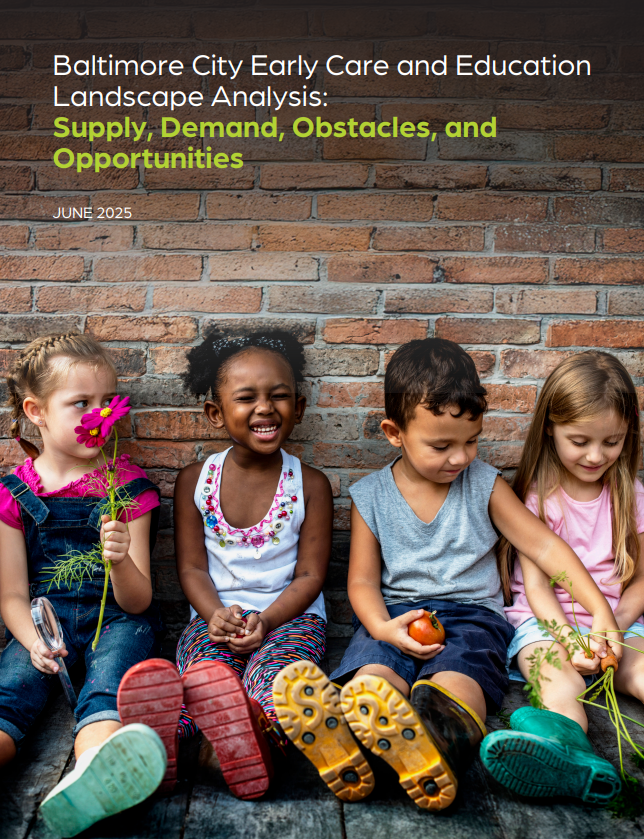Baltimore City Early Care and Education Landscape Analysis: Supply, Demand, Obstacles, and Opportunities
- The accumulated research evidence on the importance of high-quality early care and education to young children’s developing brains, their social emotional development, future success in school, and improved outcomes over the life course.
- The role early care and education plays in allowing parents to pursue family-sustaining employment and their own education and career goals.
- A growing consensus that ensuring access to high-quality early care and education is an important economic mobility strategy for communities to undertake, especially in cities like Baltimore where past practices and policies have created vast disparities in wealth and access to opportunity
About the Report
The Baltimore City Early Care and Education Landscape Analysis was commissioned by the Baltimore City Early Childhood Advisory Council (ECAC) and funded by a grant from the Maryland State Department of Education through the Family League of Baltimore City. Additional funding from members of the Prenatal to Five Impact Collaborative at Maryland Philanthropy Network supported editing and design. The Fund for Educational Excellence and the Family League of Baltimore provided project coordination, leadership, and guidance throughout.
Partners in producing this analysis are:
- The Baltimore Neighborhood Indicators Alliance at the Jacob France Institute at the University of Baltimore, which provided data analysis and geo-mapping.
- The Early Childhood Data Collaborative of the Baltimore Educational Research Consortium at Johns Hopkins University, which provided data on births and school readiness.
- The Maryland Family Network, which contributed information on the location, capacity, cost, and EXCELS rating (Maryland’s quality rating system) of early care and education programs in Baltimore via the LOCATE child care data set.
- Principal investigators from Strategic Thinking for Social Change and the School of Education and Human Development at the University of Virginia who directed the project, completed additional analyses, and prepared drafts of this report and other presentations of findings for review and discussion.
- Waldron Strategies, which provided editing and graphic design services.
This is the first in a series of reports commissioned by project funders. It will be followed by an analysis of young children’s early childhood experiences in Baltimore from birth to age five and surveys and focus groups to gather parent and caregiver perspectives on early childhood education and care availability and choice.
Project partners gratefully acknowledge all of the public and private funders and coordinating partners who have inspired and supported this and the related work to come:
- Abell Foundation
- Baltimore City Early Childhood Advisory Council
- Baltimore Community Foundation
- Marilynn Duker
- Family League of Baltimore City
- Fund for Educational Excellence
- Zanvyl and Isabelle Krieger Fund
- Maryland Philanthropy Network/Prenatal to Five Impact Collaborative
- Maryland State Department of Education
- The Richman Foundation
- Sherman Family Foundation
- Thalheimer-Eurich Charitable Fund
- United Way of Central Maryland
- Wright Family Fund
We are also grateful to the many members of the Early Childhood Advisory Council who reviewed early drafts of this report and provided essential corrections and context.
The broad and deep support for this research and analysis is evidence of a growing commitment to the city’s youngest children and their families, which only bodes well for all of us.
Click here to read the full report.
Source: Baltimore City Early Childhood Advisory Council
FIND MORE BY:


